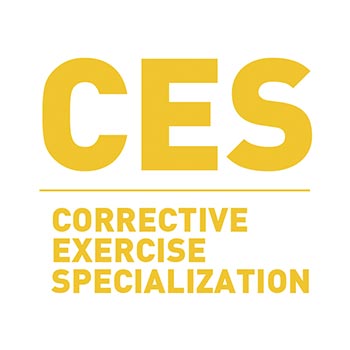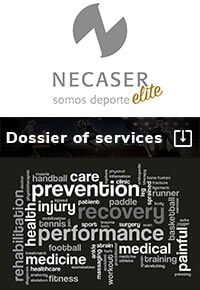CES – Corrective Exercise – Programa Correctivo Postural


CES – Corrective Exercise – Programa Correctivo Postural
CEUs: NASM – 1.9; ACE 2.0
Corrective Exercise is one of the most important components of a comprehensive exercise program. Regardless of athletic ability or fitness level, almost every person has some degree of dysfunction that increases the chance for injury. This could include muscle imbalances, decreased flexibility, or lack of core and joint stability. Leading fitness professionals should be able to identify these dysfunctions and create an integrated corrective exercise training program to help their clients remain injury free.
Precio: 899 € (Iva Incluido) 629 € Iva Incluido
Open new career opportunities. Expand your skillset and become the trainer who can successfully take on any client including top athletes.
Increase your expertise. Master the Corrective Exercise Continuum (CEx) and effectively train clients experiencing musculoskeletal impairments throughout the body.
Earn more.* NASM-CPTs with an NASM-CES earn 48% more than other Certified Personal Trainers.
Help people live healthier and more fulfilling lives.
The NASM Corrective Exercise Specialist (CES) Self-Study program includes everything you need to successfully achieve the NASM-CES credential. .
- NEW Lecture videos
- NEW Exercise technique & cueing videos
- NEW Interactive learning modules & quizzes
- Exercise library with over 200 exercise demos
- NEW Client scenarios and sample programming
- Study guide
- Online practice exam
- Final Exam
After the completion of the course, you will take an online final exam from the comfort of your own home, or wherever you prefer to take tests, that consists of 100 questions. Each question will be multiple-choice. The exam is timed and cannot exceed 90 minutes. To pass, you need a score of 70% or higher. Don’t fret though, if you score below that, you have up to 3 attempts to pass.
Section 1: Introduction to Corrective Exercise Training
Chapter 1: Rationale for Corrective Exercise
The student will understand the rationale and importance of delivering corrective exercise training to clients.
Chapter 2: Human Movement Science and Corrective Exercise
Discover the relationship between functional anatomy, the human movement system, and optimal movement and how this applies to the overall corrective exercise strategy.
Section 2: Corrective Exercise Techniques
Chapter 3: Inhibitory Techniques
Choose and implement the appropriate inhibitory strategies based on the current evidence gained from the assessments you’ve conducted.
Chapter 4: Lengthening Techniques
Learn the rationale and proper implementation of various flexibility modalities.
Chapter 5: Activation Techniques
Understand the guidelines, precautions, and contraindications for implementing isolated strengthening exercises.
Chapter 6: Integration Techniques
Understand the importance of integrated dynamic movement and how to progress these movements to reach your client’s performance goals.
Section 3: Assessment
Chapter 7: Client Intake and Assessment
Learn best practices for client intake and assessment to create the most targeted training program that addresses their specific needs.
Chapter 8: Static Assessments
Unlock the vital first step in the corrective exercise assessment process, which gives insight into the overall body alignment of the client.
Chapter 9: Movement Assessments
Movement assessments are the cornerstone of the assessment process. Work through the assessment flowchart, selecting the most relevant and targeted assessments.
![]() Chapter 10: Mobility Assessments
Chapter 10: Mobility Assessments
Gain an understanding of how to further refine the assessment process with targeted mobility assessments.
Section 4: Programming Strategies
Chapter 11: Corrective Strategies for the Foot and Ankle
Learn corrective exercise strategies for the foot and ankle.
Chapter 12: Corrective Strategies for the Knee.
Learn corrective exercise strategies for the knee
Chapter 13: Corrective Strategies for the Lumbo-Pelvic-Hip Complex
Learn corrective exercise strategies for the LPHC.
Chapter 14: Corrective Strategies for the Thoracic Spine and Shoulder
Learn corrective exercise strategies for the thoracic spine and shoulder.
Chapter 15: Corrective Strategies for the Wrist and Elbow
Learn corrective exercise strategies for the wrist and elbow.
Chapter 16: Corrective Strategies for the Cervical Spine
Learn corrective exercise strategies for the cervical spine.
![]() Chapter 17: Self-Care and Recovery
Chapter 17: Self-Care and Recovery
Intense training and life stress can place unfamiliar demands on the body. Learn recovery strategies to mitigate the effects of these stressors on the body so that your clients can perform at an optimal level.
![]() Chapter 18: Integrating Corrective Exercise into an Overall Strategy
Chapter 18: Integrating Corrective Exercise into an Overall Strategy
Learn how to implement corrective exercise in a variety of scenarios and environments for clients with varying goals.
A current NASM-CPT certification, or
A current health and fitness certification accredited by NCCA, NBFE or DETC, or
REPs Level 3 or higher credential (candidates outside of the US only), or
4-year collegiate degree or
Be a current Licensed or Certified Massage Therapist.

